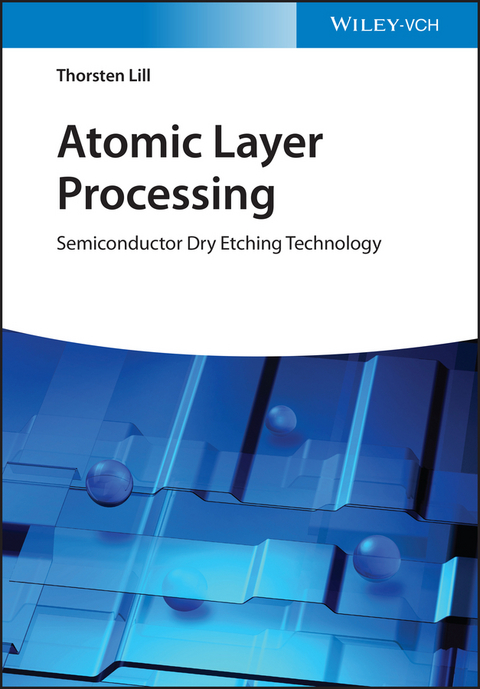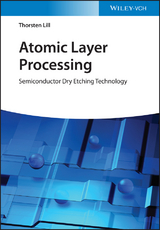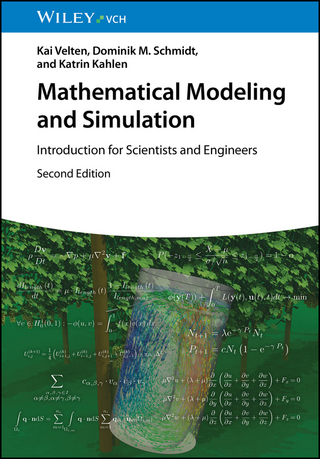Atomic Layer Processing
Wiley-VCH (Verlag)
978-3-527-34668-4 (ISBN)
Thorsten Lill is a Vice President for Emerging Etch Technologies and Systems at Lam Research, the market leader in etching tools for the semiconductor industry. He has been working in the field of plasma, radical, thermal, ion beam and plasma etching since 1995. He has a Ph.D. in Physics from the Albert-Ludwigs-University in Freiburg, Germany and was a post doc at the Argonne National Laboratory. He has a track record in developing commercially successful etching equipment for the semiconductor industry. He published 85 articles and 66 patents in the field. Thorsten Lill holds a certificate in Entrepreneurship and Innovation from Stanford University.
1. INTRODUCTION
2. FUNDAMENTALS
2.1. Important performance metrics of etching processes
2.2. Physisorption and Chemisorption
2.3. Desorption
2.4. Surface Reactions
2.5. Sputtering
2.6. Implantation
2.7. Diffusion
2.8. Transport phenomena in 3D features
2.8.1. Neutral transport
2.8.2. Ion transport
2.8.3. Transport of reaction products
2.9. Classification of etching technologies
3. THERMAL ETCHING
3.1. Mechanism and performance metrics of Thermal Etching
3.2. Applications examples
4. THERMAL ISOTROPIC ALE
4.1. Mechanism of Thermal Isotropic ALE
4.1.1. Chelation / Condensation ALE
4.1.2. Ligand Exchange ALE
4.1.3. Conversion ALE
4.1.4. Oxidation / Fluorination ALE
4.2. Performance metrics of Thermal Isotropic ALE
4.3. Plasma-assisted Isotropic ALE
4.4. Applications examples
4.4.1. Area-selective deposition
4.4.2. Formation of lateral devices
5. RADICAL ETCHING
5.1. Mechanism of Radical Etching
5.2. Performance metrics
5.3. Applications examples
6. DIRECTIONAL ALE
6.1. Mechanism of Directional ALE
6.1.1. ALE with directional modification step
6.1.2. ALE with directional removal step and modification by chemisorption and diffusion
6.1.3. ALE with directional removal step and modification by reactive layer deposition
6.2. Performance metrics
6.3. Applications examples
7. REACTIVE ION ETCHING
7.1. Reactive Ion Etching Mechanisms
7.1.1. Simultaneous species fluxes
7.1.2. Chemical sputtering
7.1.3. Mixed layer formation
7.1.4. Role of etching products
7.2. Performance metrics
7.3. Application examples
7.3.1. Patterning
7.3.2. Logic Devices
7.3.3. DRAM and 3D NAND memory
7.3.4. Emerging memories
8. ION BEAM ETCHING
8.1. Mechanism and performance metrics of Ion Beam Etching
8.2. Applications examples
9. ETCHING SPECIES GENERATION
9.1. Introduction of low temperature plasmas
9.2. Capacitively coupled plasmas
9.3. Inductively coupled plasmas
9.4. Ion energy distribution modulation
9.5. Plasma-pulsing
9.6. Grid sources
10. EMERGING ETCHING TECHNOLOGIES
10.1. Electron assisted chemical etching
10.2. Photon assisted chemical etching
| Erscheinungsdatum | 21.04.2021 |
|---|---|
| Verlagsort | Weinheim |
| Sprache | englisch |
| Maße | 170 x 244 mm |
| Gewicht | 584 g |
| Themenwelt | Naturwissenschaften ► Chemie |
| Technik ► Elektrotechnik / Energietechnik | |
| Technik ► Maschinenbau | |
| Schlagworte | Chemie • Chemistry • Dünne Schichten, Oberflächen u. Grenzflächen • Electrical & Electronics Engineering • Elektrotechnik u. Elektronik • Halbleiter • Materials Science • Materialwissenschaften • Oberflächen- u. Kolloidchemie • semiconductors • Surface & Colloid Chemistry • Thin Films, Surfaces & Interfaces |
| ISBN-10 | 3-527-34668-6 / 3527346686 |
| ISBN-13 | 978-3-527-34668-4 / 9783527346684 |
| Zustand | Neuware |
| Informationen gemäß Produktsicherheitsverordnung (GPSR) | |
| Haben Sie eine Frage zum Produkt? |
aus dem Bereich




